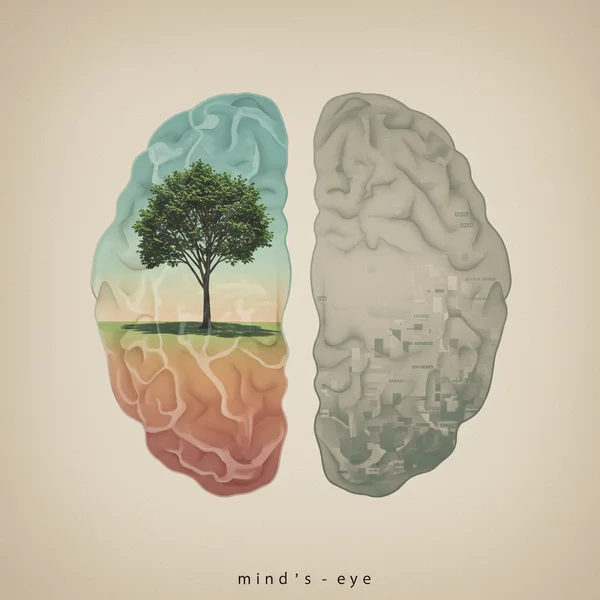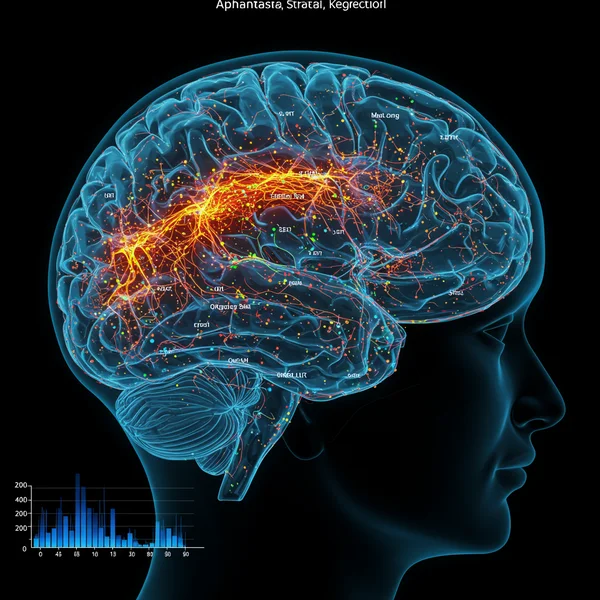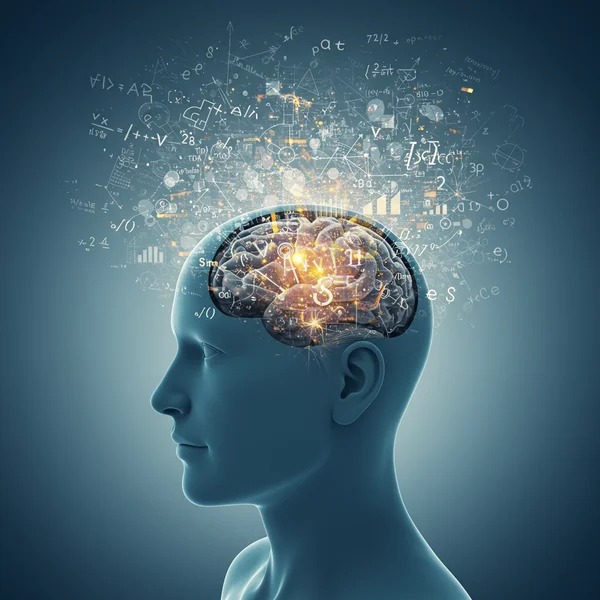Is Aphantasia Neurodivergent? Take Our Free Aphantasia Test
Have you ever felt like your internal world works differently from others? When friends reminisce about a vivid memory, do you recall facts and feelings but see no pictures? This experience, the inability to voluntarily create mental images, is known as aphantasia. It’s a fascinating variation in human consciousness that leads to a crucial question: Is aphantasia neurodivergent?
For many, discovering the term 'aphantasia' is a moment of profound self-recognition. It provides a name for a lifelong, unspoken difference. This article delves into the concept of neurodiversity and examines where aphantasia fits within this empowering framework. If you're curious about your own cognitive landscape and want to explore your mind's eye, you've come to the right place.
What Does Neurodiversity Truly Mean?
Before we can place aphantasia, we must first understand the landscape. The term neurodiversity is a powerful and inclusive concept. It proposes that differences in brain function and behavioral traits are simply part of the natural variation of the human population. The conversation shifts away from a rigid binary of "normal" and "abnormal" to a more accepting and accurate model of a spectrum.
Within this framework, conditions like autism and ADHD aren't "disorders" to be cured, but rather distinct neurological makeups with their own unique sets of strengths and challenges. The core idea is recognizing that every brain is wired differently, and that this diversity is a valuable asset to humanity, not a deficit.

Moving Beyond "Normal": The Spectrum of Human Cognition
For centuries, psychology and medicine operated on a model that defined a single "correct" way for a brain to function. Anything outside of that narrow band was often pathologized. The neurodiversity movement challenges this by introducing the idea of a spectrum of human cognition.
Think of it like a color palette. There isn't one "right" color; there is a vast and beautiful range. Similarly, there isn't one "right" way to think, learn, process information, or experience the world. Your cognitive makeup is your unique hue on this spectrum. Adopting this perspective helps us appreciate the wide array of minds that exist, each contributing to the richness of our collective experience.
Examples of Neurodivergent Conditions and Traits
To better grasp the concept, it helps to look at some recognized examples of neurodivergence. These include:
- Autism Spectrum Disorder (ASD): Characterized by differences in social communication, sensory processing, and patterns of behavior.
- Attention-Deficit/Hyperactivity Disorder (ADHD): Involves differences in executive functions like attention, impulse control, and organization.
- Dyslexia: A specific learning difference that primarily affects the skills involved in accurate and fluent word reading and spelling.
- Dyspraxia: Affects physical coordination.
Viewing these as different operating systems, rather than a list of flaws, is the first step toward creating a more inclusive and accommodating world. Each has its own way of processing data, and understanding this is key.
Is Aphantasia a Form of Neurodiversity?
Now, let's return to our central question. Based on the definition of neurodiversity as a natural variation in brain function, the argument that aphantasia is a form of neurodiversity is incredibly strong. Aphantasia is not a disease, a disorder, or a sign of brain damage; it is simply a different way of experiencing thought.
People with aphantasia are not broken; their minds just operate without a visual track. They think, remember, and imagine using different pathways—perhaps through verbal concepts, kinesthetic feelings, or pure factual knowledge. This difference aligns perfectly with the core principle of neurodiversity: a natural variance in human cognition. Viewing aphantasia through this lens removes stigma and promotes self-acceptance. If you are curious where you might fall on the visualization spectrum, an aphantasia self-assessment can be a great starting point.

Aphantasia as a Distinct Cognitive Profile
Describing aphantasia as a distinct cognitive profile is more accurate and empowering than labeling it a "deficit." This profile is defined by the absence of a "mind's eye." While visualizers might replay a memory like a movie, someone with aphantasia might access a list of facts about the event: where it happened, who was there, and what was said.
Non-visual thinking is not inherently better or worse—just different. The brain is remarkably adaptable, and it develops other systems to compensate and thrive. Understanding your own cognitive profile is the key to leveraging your unique strengths. Our scientifically inspired visual imagery test is designed to help you begin that journey of discovery.
Scientific Perspectives and Ongoing Research
The scientific community is actively exploring the neurological underpinnings of aphantasia. Research, often using tools like the Vividness of Visual Imagery Questionnaire (VVIQ) which inspires many online tests, shows that aphantasia is a real and measurable phenomenon. Studies suggest that it may be linked to differences in the connectivity between the frontal cortex and visual processing regions of the brain.

Ongoing research is crucial because it provides objective evidence that aphantasia is a genuine neurological variation. This work validates the experiences of millions and moves the conversation from anecdotal reports to scientific fact. As researchers learn more, we gain a deeper appreciation for the brain's incredible plasticity and the diverse ways it can construct reality.
Embracing Aphantasia within the Cognitive Spectrum
Accepting aphantasia as part of the cognitive spectrum is a liberating step. It allows individuals to stop comparing their internal experience to a supposed "norm" and start exploring the unique advantages their mind offers. The mindset shifts from "I can't" to "I do it differently."
This fosters a sense of community and shared identity, empowering people to speak openly about their experiences, share coping strategies, and celebrate the unique ways they navigate the world.
Understanding the Strengths of a Non-Visual Mind
A common question is: what are people with aphantasia good at? While every individual is different, having a non-visual mind can correlate with certain strengths. Without mental pictures to get caught up in, some people with aphantasia report:
-
Stronger Abstract Thinking: They may excel at conceptualizing complex systems like mathematics, coding, or philosophy.
-
Reduced Trauma Re-visualization: Some find it easier to move on from negative events because they don't have to re-live them visually.
-
Living in the Present: A less cluttered mental "desktop" can lead to a greater focus on the here and now.
-
Exceptional Factual Recall: Memory might function more like a database, relying on semantic information rather than sensory replays.

Recognizing these potential upsides is a key part of embracing this cognitive style.
Life with Aphantasia: Adaptations and Awareness
Living with aphantasia involves a degree of adaptation, often unconsciously. For example, when asked to remember a person's face, someone with aphantasia might recall a list of features ("brown hair, blue eyes, glasses") rather than seeing the face. To enjoy a novel, they may focus more on plot, dialogue, and emotional arcs than on the visual descriptions.
The journey begins with awareness. Understanding how your mind works is the first and most important step. Are you curious if your experience aligns with aphantasia? The only way to know is to check for yourself. An online aphantasia test offers a private, accessible way to gain insight into your unique cognitive makeup.
Unlocking Your Mind's Unique Landscape
Ultimately, whether aphantasia is classified as neurodivergent is more than just a matter of labels. It’s about validation, acceptance, and understanding. The evidence strongly suggests that aphantasia is not a disorder, but a natural variation on the vast and beautiful spectrum of human consciousness. It's a different way of thinking, with its own challenges and its own hidden strengths.
Embracing this perspective can change your relationship with your own mind, allowing you to appreciate your unique cognitive landscape and learn how to best navigate it.
Ready to start your journey of self-discovery? Take the test on our homepage. Our free, scientifically-inspired aphantasia test is a simple, private first step to better understanding your mind's eye.
Frequently Asked Questions About Aphantasia & Neurodiversity
Is aphantasia neurodivergent?
Yes, aphantasia is widely considered a form of neurodiversity. It represents a natural variation in human cognition related to mental imagery, not a disorder or deficit. It fits the neurodiversity model, which celebrates different ways of thinking and processing information.
What are common traits of people with aphantasia?
The core trait is the inability to voluntarily create mental images. Other common traits may include difficulty recognizing faces (prosopagnosia), a memory that is more factual than sensory, and a thinking style that is often described as verbal or conceptual rather than visual.
How can I tell if I have aphantasia?
The most straightforward way is through self-reflection and assessment. A good starting point is a reliable online aphantasia test, which asks you to rate the vividness of your mental imagery across various scenarios. For an easy and insightful evaluation, you can try our free tool today.
Is aphantasia a type of autism or ADHD?
No, aphantasia is not a type of autism or ADHD. They are distinct neurological profiles. However, like many neurodivergent traits, they can co-occur. A person can be both autistic and have aphantasia, but one does not cause the other.
Disclaimer: This article is for informational purposes only and does not constitute medical advice. The test on this website is an educational tool for self-reflection and is not a clinical diagnosis. If you have concerns about your health, please consult a qualified professional.